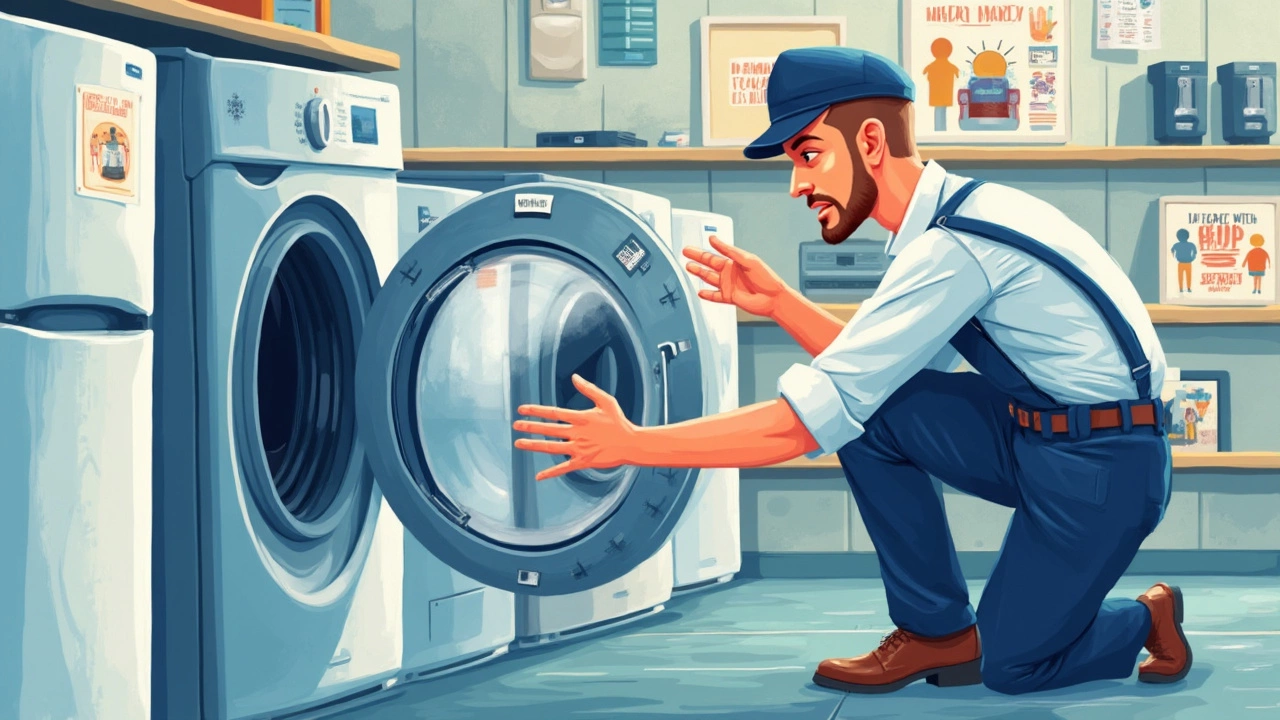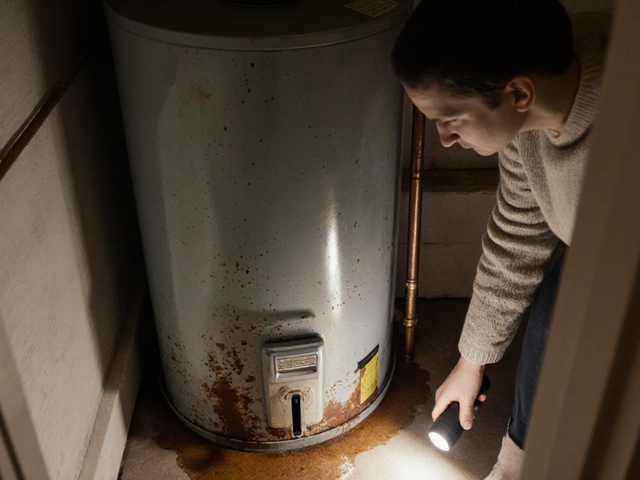Ever seen a sticker on your fridge or washing machine with numbers and fancy logos? That’s the result of appliance standards—rules that manufacturers must follow to make sure their products aren’t wasting energy or causing safety risks. In simple terms, appliance standards are like the ground rules in a sports game, but for your dishwasher or dryer. They set limits for stuff like energy use, water consumption, and even noise.
The cool thing is, these rules aren’t random. Government agencies, like the U.S. Department of Energy, constantly review them to match modern technology and real-life needs. So, when you see a label or a rating, it means someone checked that device against official benchmarks. This gives you, and everyone else, a fair shot at owning appliances that won’t drain your wallet or risk your safety.
- What Are Appliance Standards?
- Why Standards Matter for Your Wallet and Safety
- How to Check If Your Appliance Complies
- Tips for Service and Getting the Most from Standards
What Are Appliance Standards?
When folks talk about appliance standards, they mean the official rules that say how much energy and water things like your fridge, washer, or dishwasher can use. The goal is to make sure everyday appliances run efficiently, safely, and don’t waste resources. These rules come from government groups, mostly the U.S. Department of Energy (DOE) and the Environmental Protection Agency (EPA) in the U.S. But most developed countries have their own sets of standards.
Back in the late 1980s, the U.S. kicked things off by making it law that certain appliances need to meet minimum performance requirements. These rules aren’t stuck in time either. The DOE updates them every few years to keep up with new tech. If a company wants to sell a big-name home appliance—think air conditioners, water heaters, or ovens—it has to prove the machine hits these minimums.
Here’s what often gets checked when an appliance is tested against standards:
- How much power it uses (energy consumption in kilowatt-hours)
- How much water it uses (gallons or liters, mostly for washers and dishwashers)
- How safely it runs (looking for electrical risks or parts that overheat)
- Sometimes, how loud it is (because a jet-engine dishwasher is nobody’s friend)
This means most home appliances you’ll see in stores have already been stressed, checked, and certified. You’ll spot compliance by looking for big labels like ENERGY STAR or the yellow EnergyGuide sticker, which show how a product stacks up on efficiency compared to similar models.
Here’s a quick snapshot of what typical standards look like for common appliances in the U.S.:
| Appliance | Standard (as of 2025) |
|---|---|
| Refrigerator-Freezer | Must use less than 400-700 kWh per year, depending on size |
| Dishwasher | Use less than 3.5 gallons of water per cycle |
| Clothes Washer | Must use less than 130 kWh/year and 15 gallons per cycle |
| Central Air Conditioner | SEER2 of at least 14 for new units |
So if you’re shopping or thinking about repairs, knowing these standards helps you figure out which appliances are up-to-date and which ones are gobbling resources. And remember, following the appliance standard doesn’t just help your own bills; it’s key for cutting national energy use and keeping things safer all around.
Why Standards Matter for Your Wallet and Safety
Appliance standards aren’t just a bunch of red tape—they actually save you money, keep your home safer, and help the environment. Here’s how that breaks down in real life.
Let’s start with the money side. When an appliance meets an appliance standard, it tends to use way less power or water. For example, a fridge built to today’s standards uses about 75% less energy than one from 1975. That’s real money off your electric bill. The U.S. Department of Energy estimates that, thanks to these rules, families save about $500 a year on average. Over a decade, that adds up to thousands back in your pocket.
| Appliance | Annual Savings vs. Old Models |
|---|---|
| Refrigerator | $70 |
| Washing Machine | $40 |
| Dishwasher | $35 |
| Water Heater | $30 |
Now, about safety. Standards aren’t just about saving cash—they also tackle fire risks, shocks, and leaks. Remember the stories about old space heaters catching fire? Most of those disasters happened before strict safety rules came in. Now, appliances must pass inspections and tests for stuff like over-heating, electrical faults, and gas leaks. This isn’t just theory—insurance companies have seen house fire claims drop as more appliances follow the rules.
Think about it: if every home in America had just one inefficient appliance swapped for a modern, standard-compliant version, we’d cut energy use by a massive amount. Plus, safer machines mean fewer calls to the fire department and fewer headaches for everyone.
- Save on monthly bills—energy-efficient appliances pay you back over time.
- Protect your family—reliable tech reduces accident risk.
- Cut down on repairs—better built means fewer breakdowns.
- Help the planet—less energy use means fewer emissions from power plants.
If you’re shopping for a new appliance, check for the sticker or label showing it meets the latest standards. It’s the fast track to saving money and sleeping easier at night.

How to Check If Your Appliance Complies
If you want to know if your fridge, washer, or another gadget lines up with appliance standards, you’re not alone. Here’s how even a non-expert can figure it out.
- Look for Labels. The easiest clue is the EnergyGuide label (that yellow tag with black writing), or the blue ENERGY STAR sticker. These aren’t just for show—they mean your appliance meets or beats government standards. The EnergyGuide shows estimated yearly energy use and costs, so you don’t have to guess.
- Check the Model Number. Many brands publish a list of their compliant products online. Take your model number (usually found inside the door or on the back) and search it on the manufacturer’s site or the ENERGY STAR product finder.
- Inspect the Manual. Newer appliances usually brag about their certifications right in the manual or on the first few pages.
- Use Online Databases. The U.S. Department of Energy’s Compliance Certification Database lets anyone look up compliance records. ENERGY STAR’s site also lets you see if your unit made the cut.
Wondering how much difference all this makes? Here’s a breakdown of what appliance standards can help you save, based on real-world government estimates.
| Appliance | Annual Energy Use Without Standards (kWh) | Annual Energy Use With Standards (kWh) | Money Saved Per Year ($) |
|---|---|---|---|
| Refrigerator | 1,200 | 500 | 90 |
| Dishwasher | 600 | 270 | 40 |
| Clothes Washer | 1,100 | 400 | 80 |
One quick tip: If you’re buying secondhand, older models made before 2011 usually miss the strictest standards. If in doubt, plug the model number into an online checker or ask the seller directly.
Staying on top of appliance standard checks isn’t just about saving a few bucks. It helps cut down on wasted energy all over the neighborhood. You don’t need fancy gear or an expert—you just need to know where to look.
Tips for Service and Getting the Most from Standards
If you want your appliances to actually live up to those shiny standards, a little bit of routine care goes a long way. Regular checkups keep them running at top efficiency, and you get the most out of your investment.
- appliance standard compliance isn’t one-and-done—filters and seals wear down, and even a high-rated appliance slips if it’s ignored.
- Replace filters in dishwashers, fridges, and dryers every few months, depending on the model. Clogged filters force the motor to work harder, sucking up more energy than the label promises.
- Don’t ignore strange noises or burnt smells. Early fixes are cheaper and can keep the appliance up to the safety and efficiency mark it was designed for.
- Use manufacturer-approved parts for repairs. Knockoff parts might save cash up front, but can wreck your warranty and tank efficiency ratings.
- Check electrical cords for wear. Cracked or frayed cords risk shocks or fire, even on a top-rated device.
Here’s something people often skip: standards sometimes change. Take a look at the service manual or sign up for manufacturer alerts so you know if a recall or new rule affects your device. You can usually find model-specific manuals online or contact customer support for updated info.
Worried your old fridge or washer is a power hog? Check the yellow EnergyGuide sticker (in the U.S.) or the European Union energy label. Compare your model’s usage to new units. Here’s a quick snapshot of how energy use stacks up:
| Appliance | Average Yearly Energy Use (kWh) | Best-in-Class (2025) (kWh) |
|---|---|---|
| Refrigerator (top-freezer) | 500 | 350 |
| Washing Machine | 400 | 90 |
| Dishwasher | 240 | 120 |
Those gaps are real. Older machines guzzle way more power, even if you’re careful. When an appliance hits a decade, it’s usually cheaper in the long run to upgrade—especially with rebates or recycling programs offered for energy-efficient swaps.
When you call for service, mention the model, age, and if you spot unusual spikes in your energy bill. Good service techs use that info to catch things before they turn into big (and expensive) failures.




